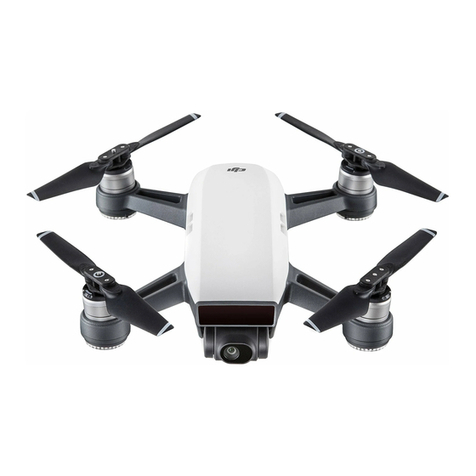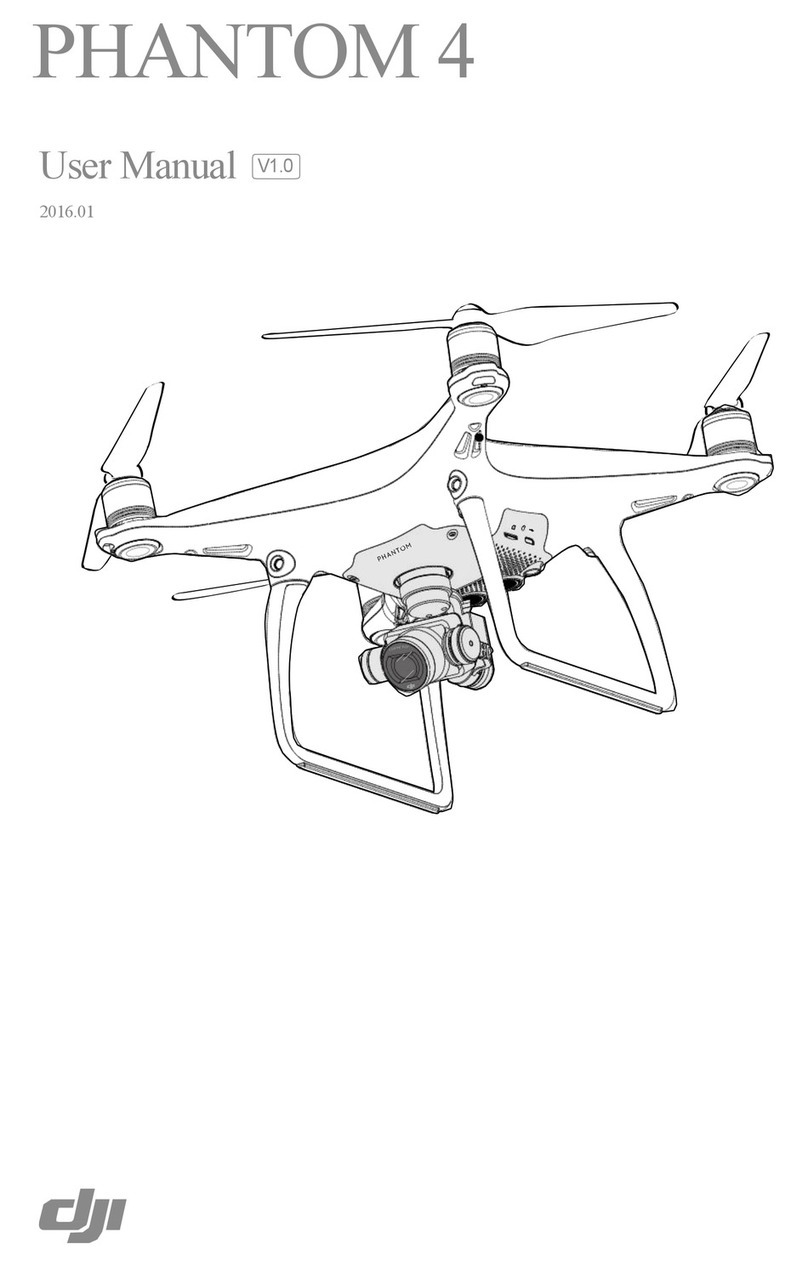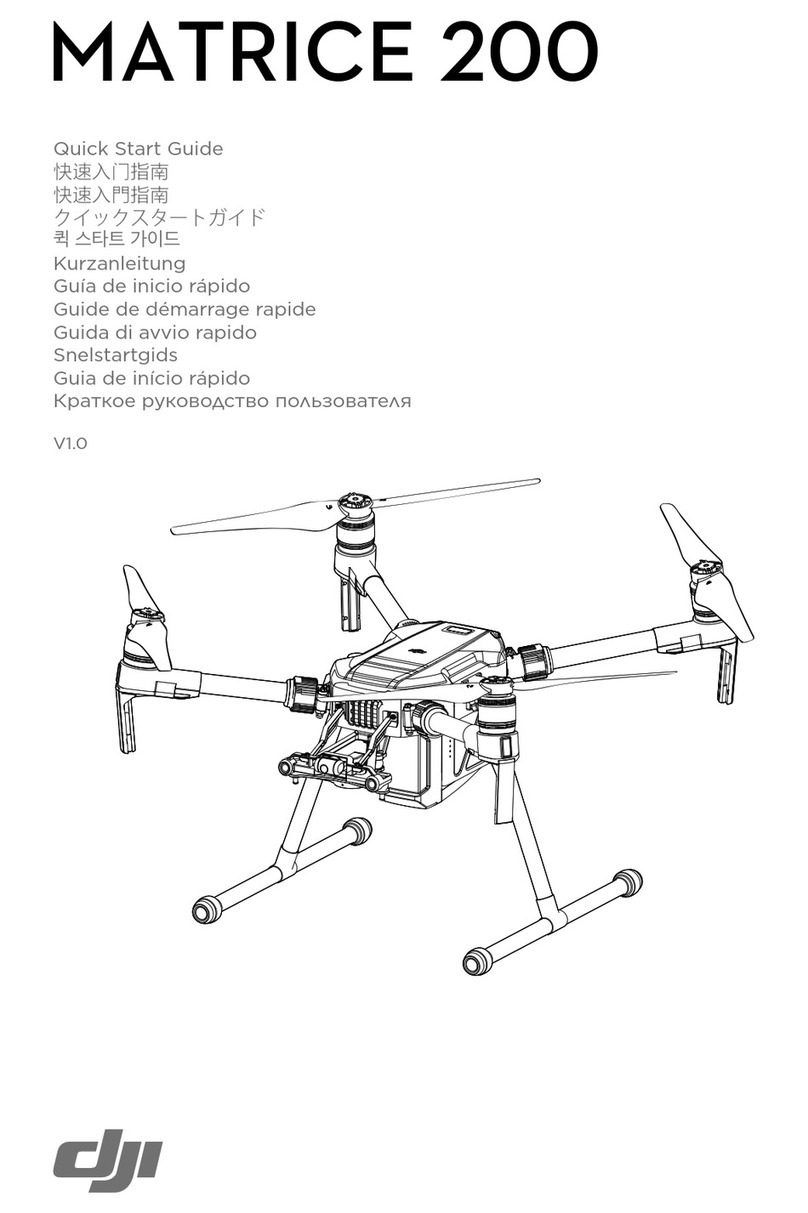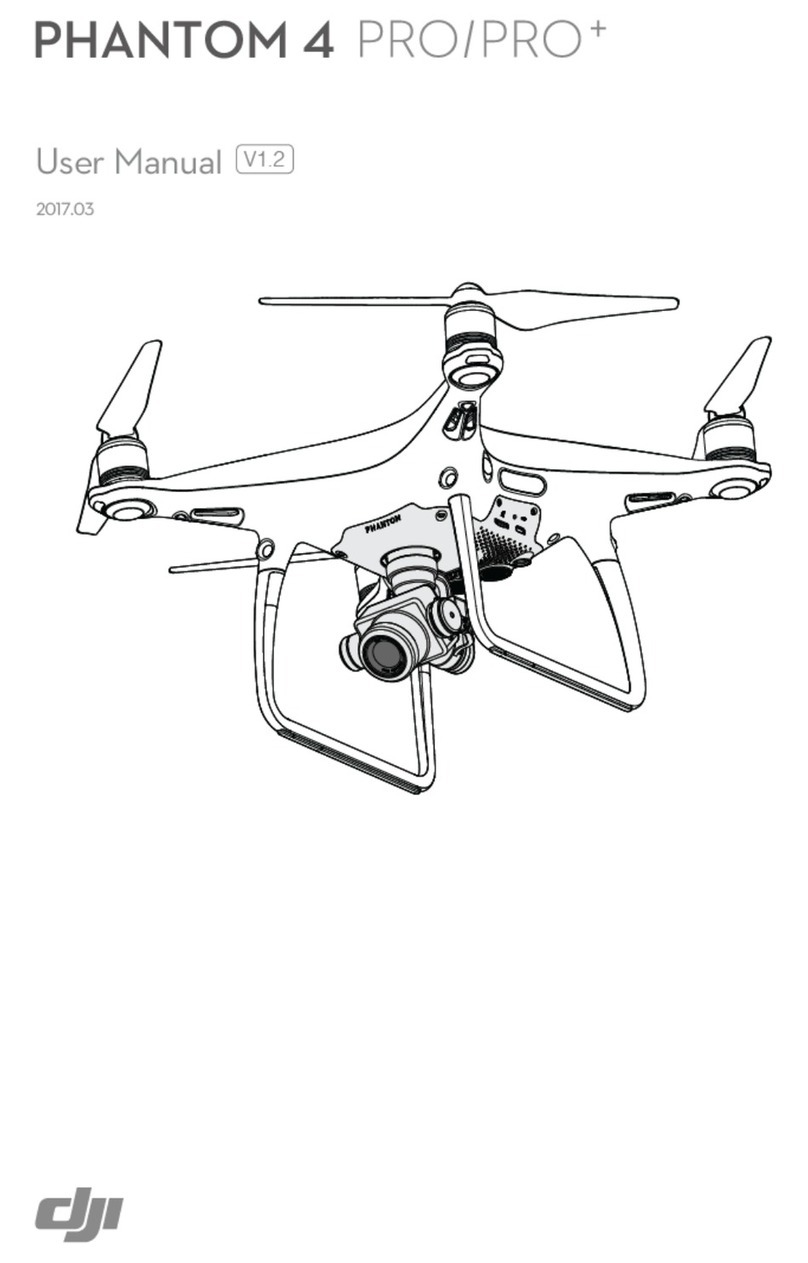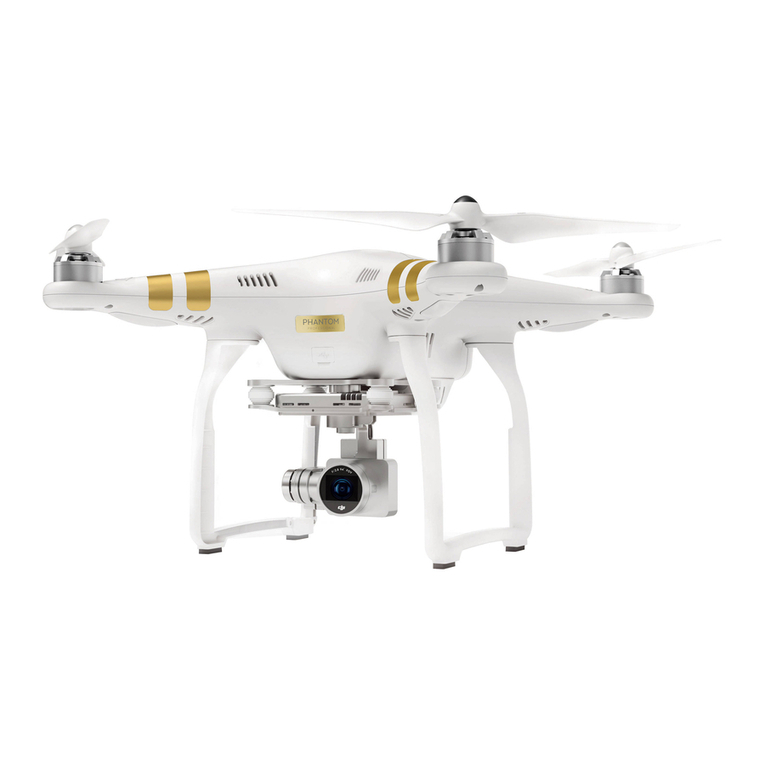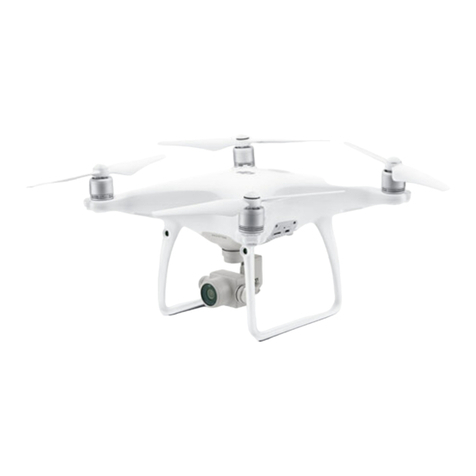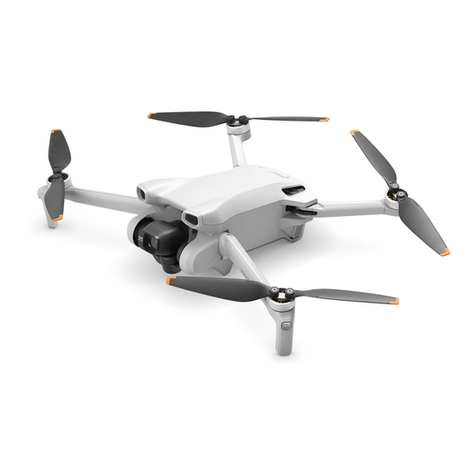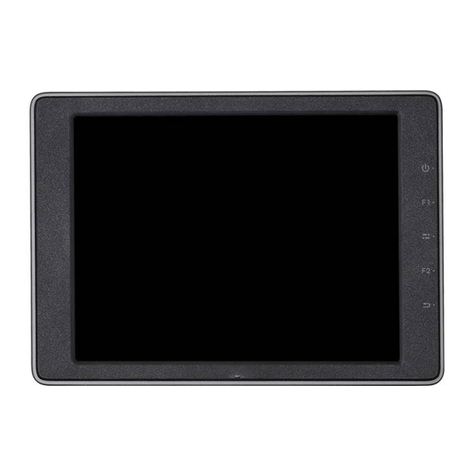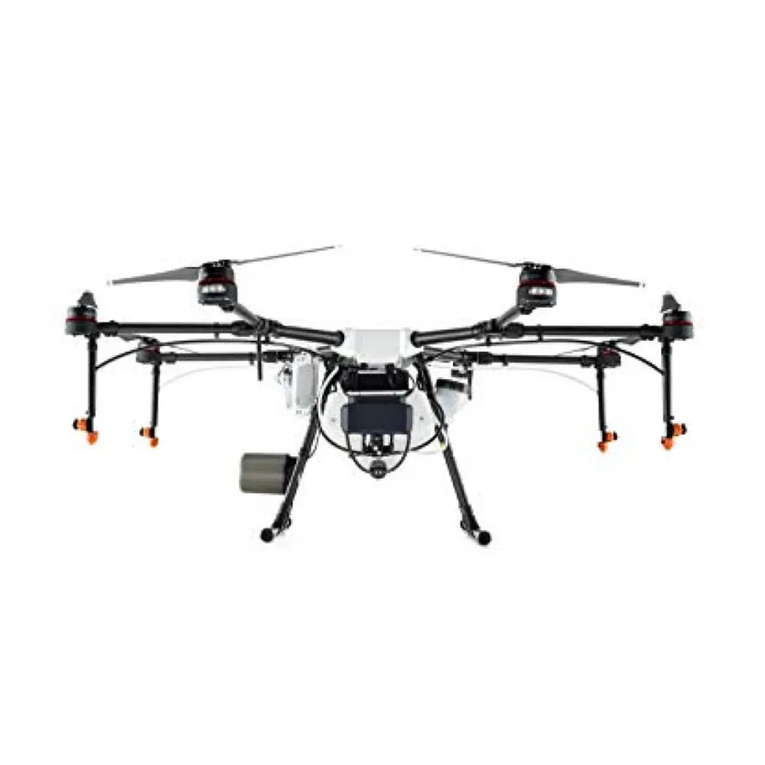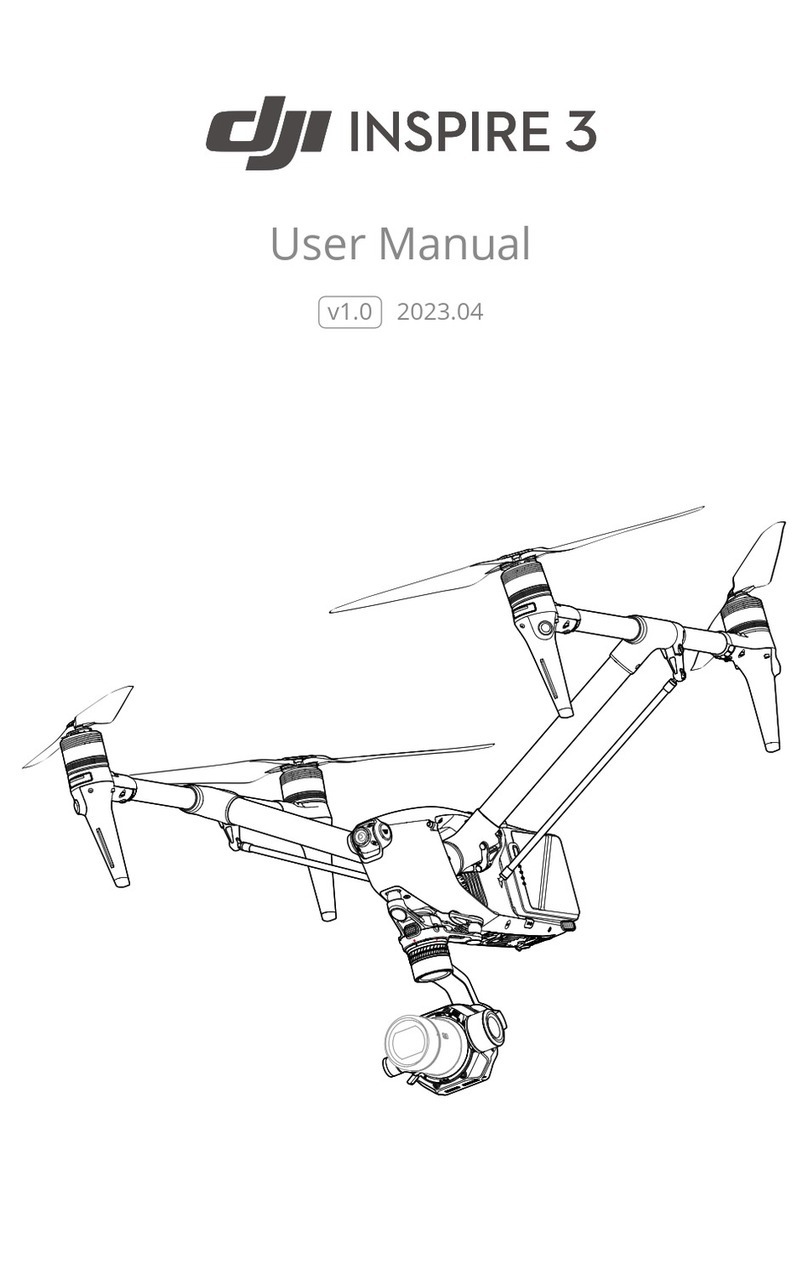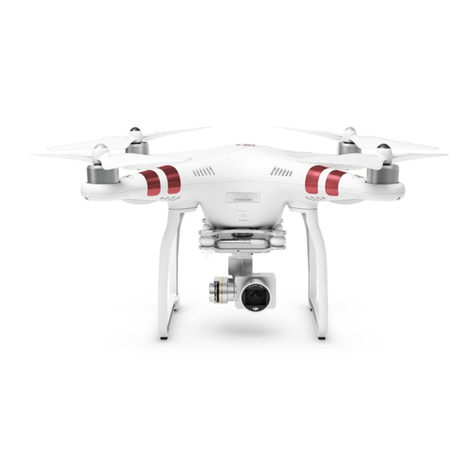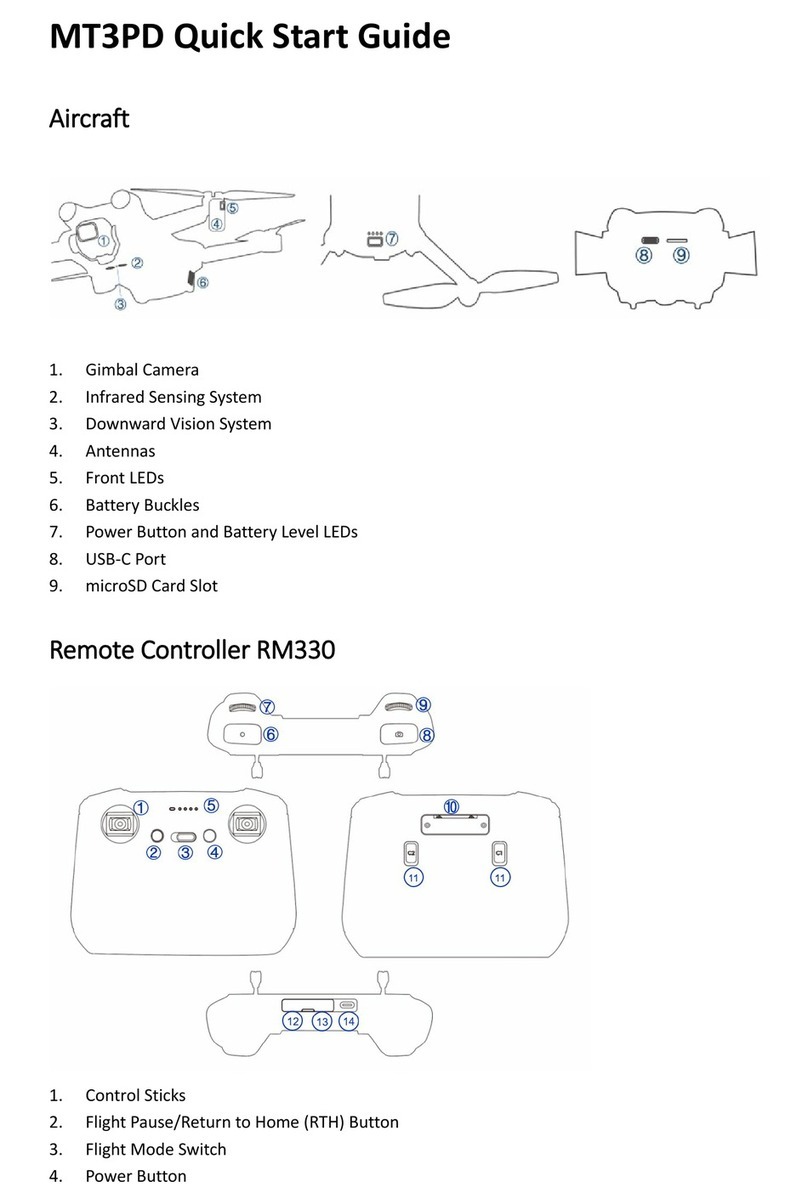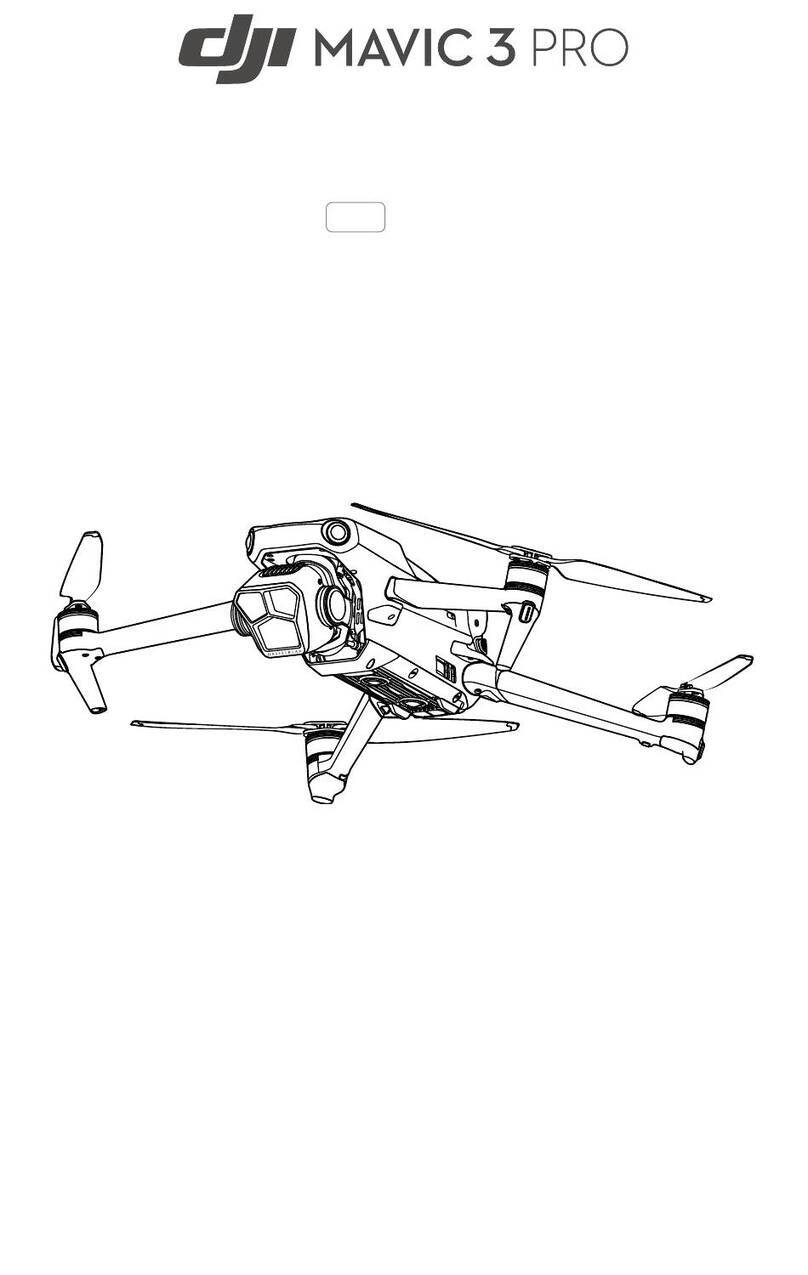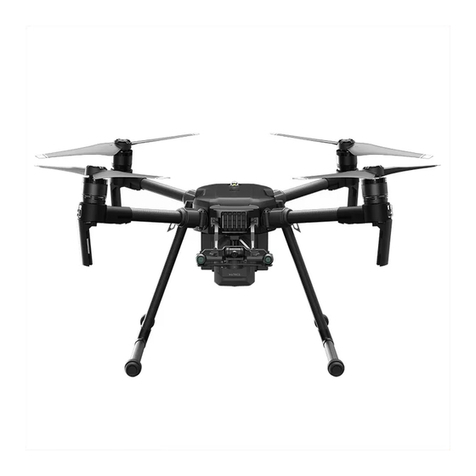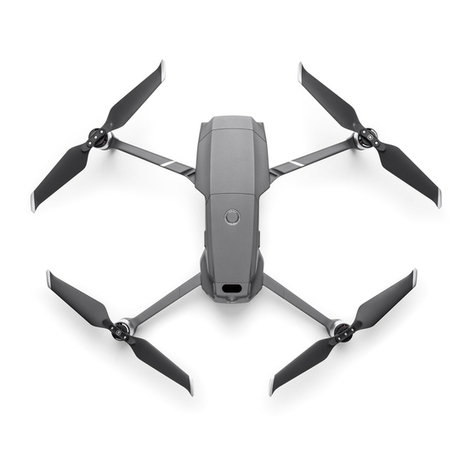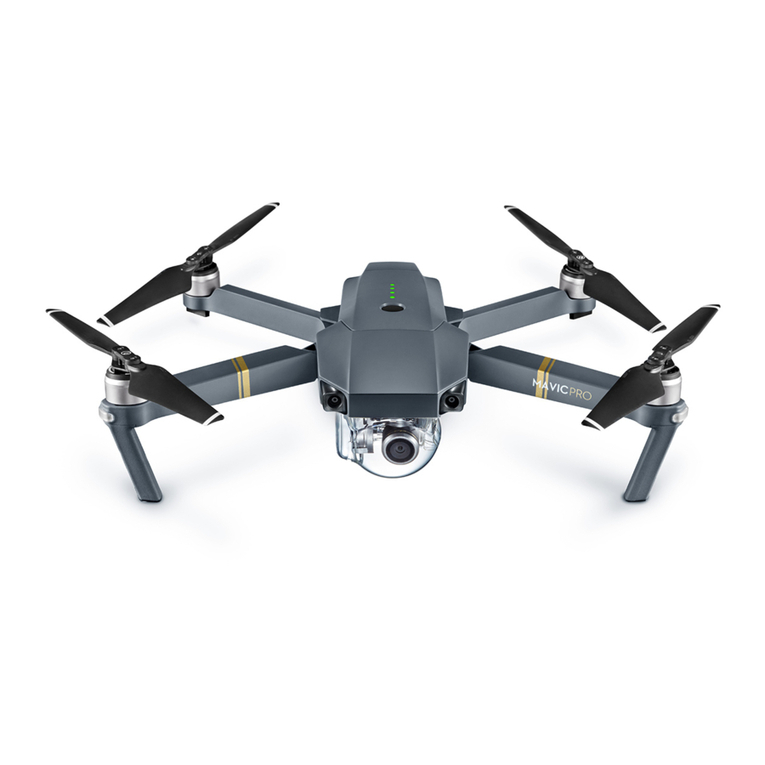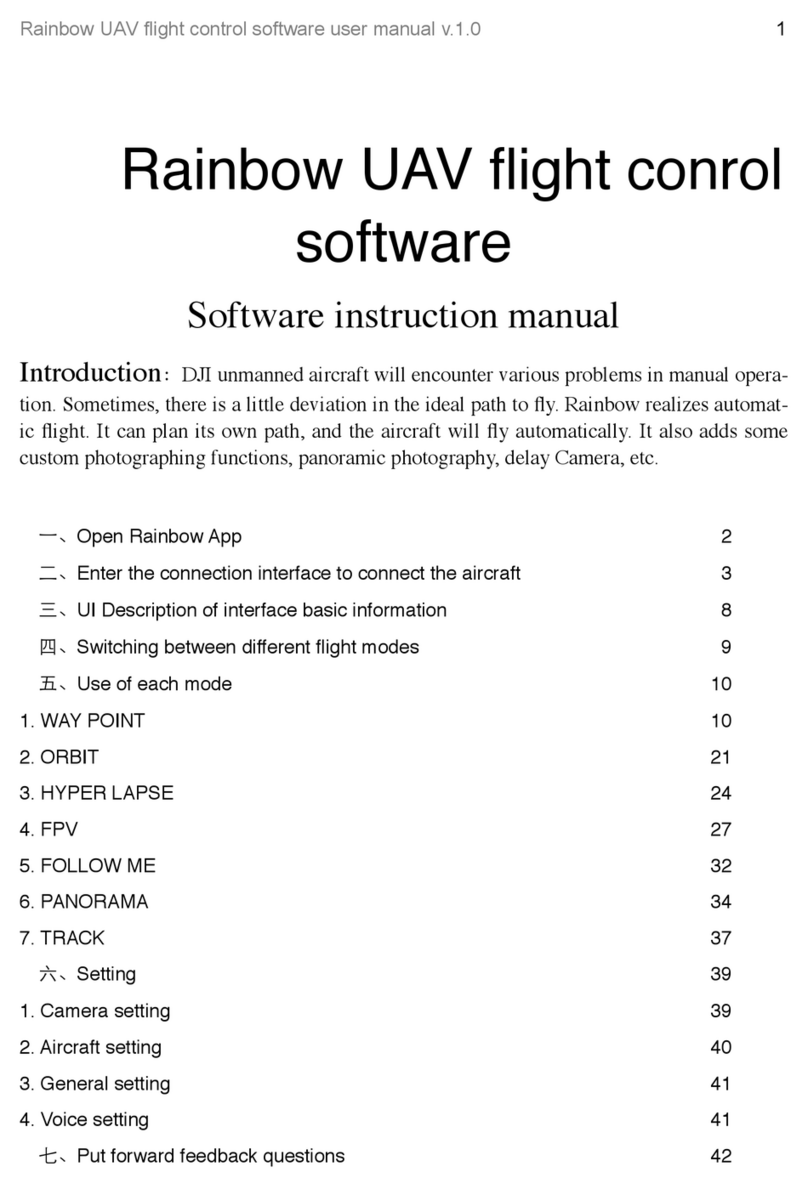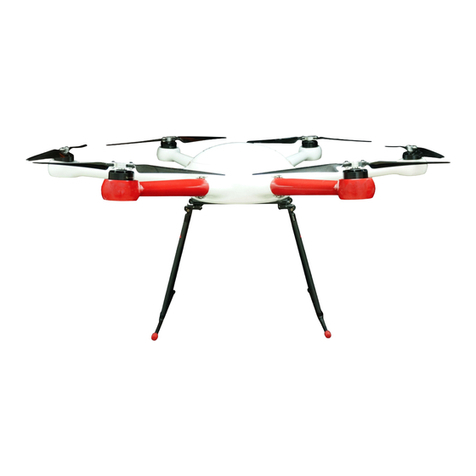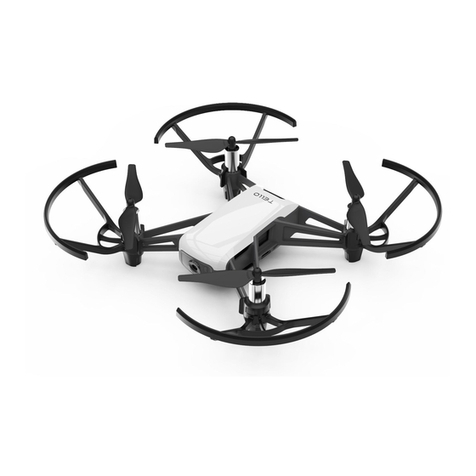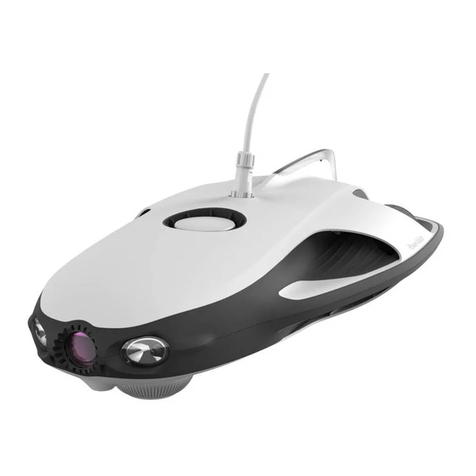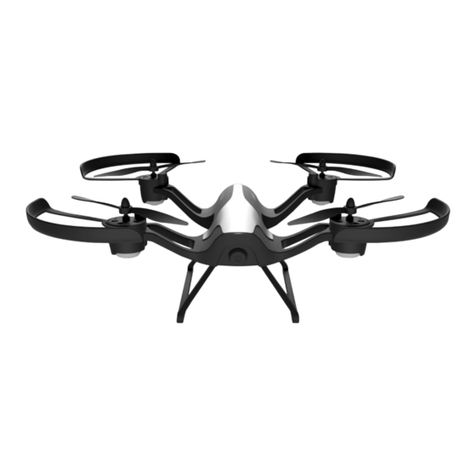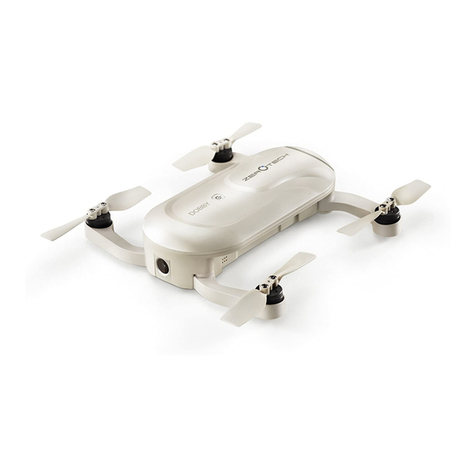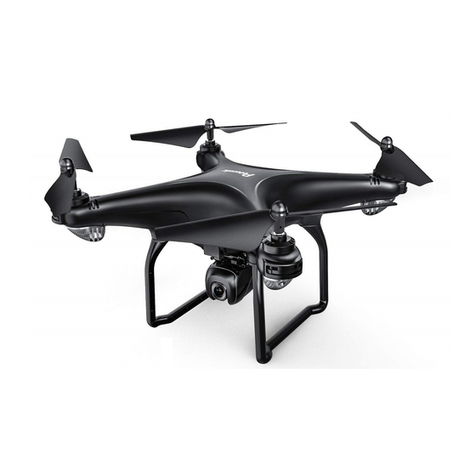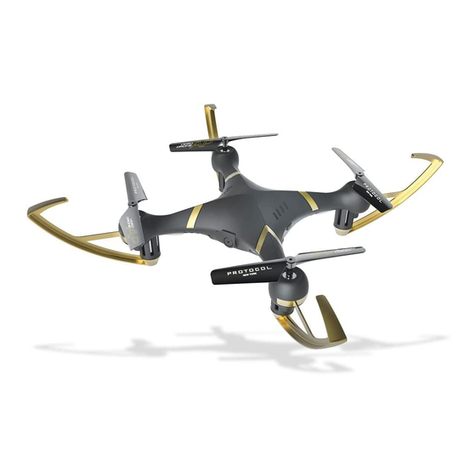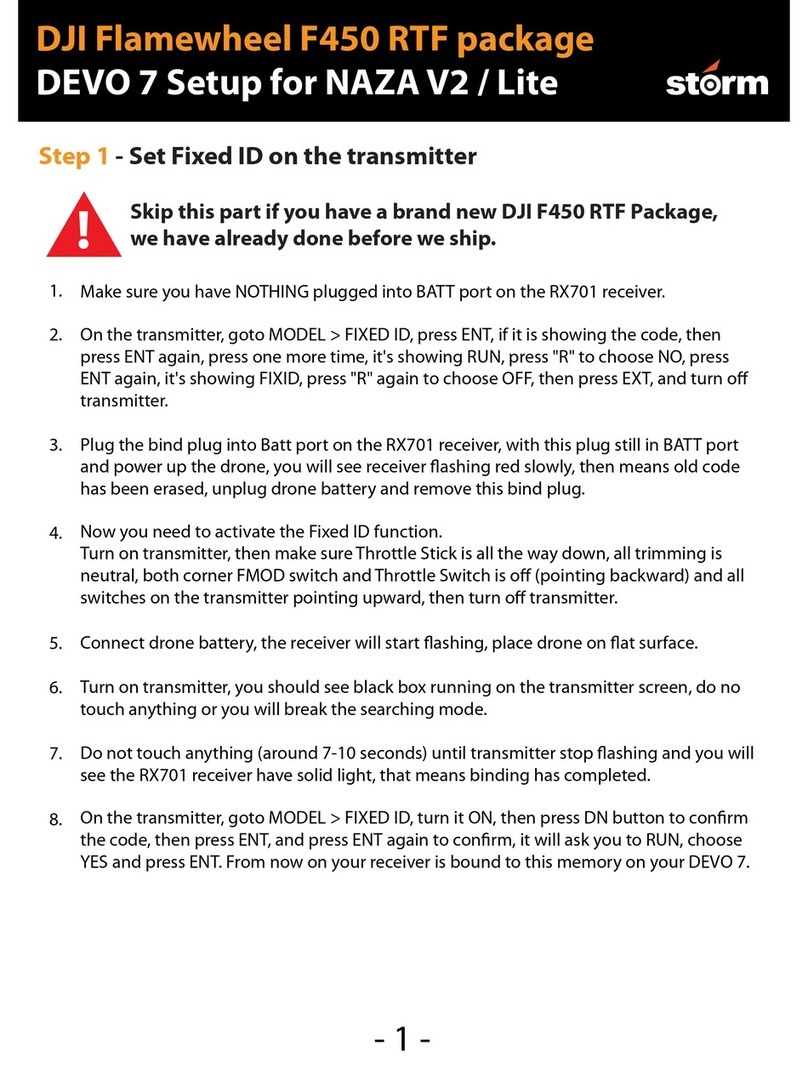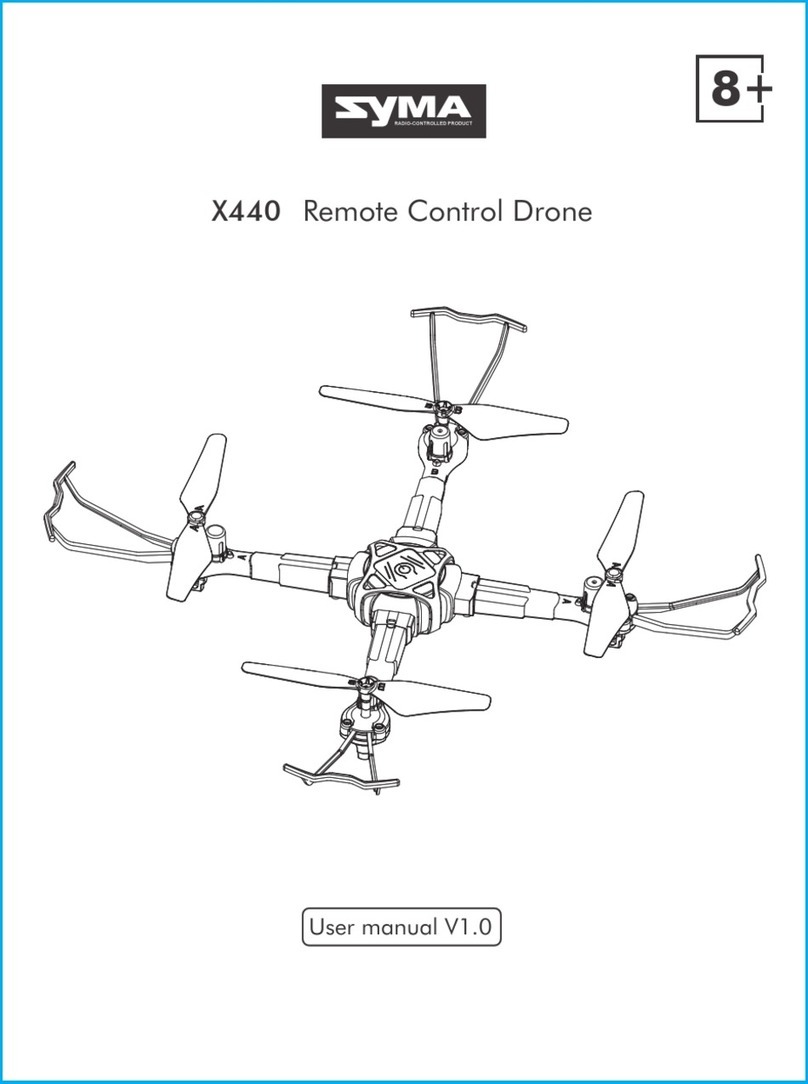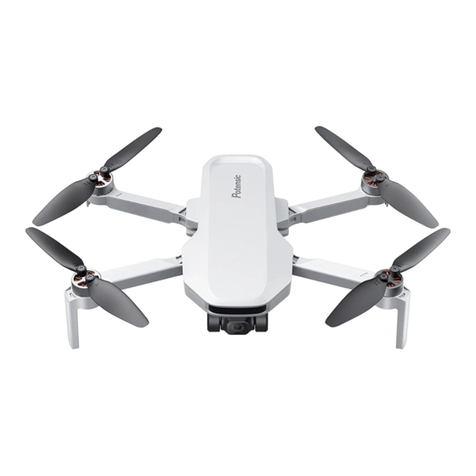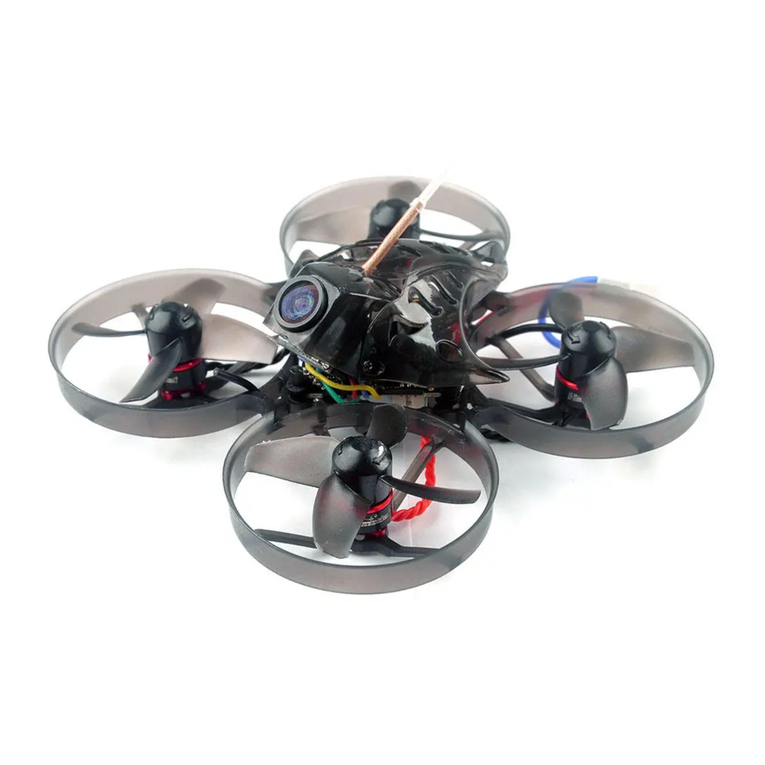
EN
7
Specications
● Aircraft
Weight (Battery & Propellers Included) 1388 g
Max Ascent Speed S-mode: 6 m/s; P-mode: 5 m/s
Max Descent Speed S-mode: 4 m/s; P-mode: 3 m/s
Max Speed 45 mph (72 kph) (S-mode); 36mph (58 kph) (A-mode);
31 mph (50 kph) (P-mode)
Max Service Ceiling Above Sea Level 19685 ft (6000 m)
Max Flight Time Approx. 30 minutes
Operating Temperature 32° to 104° F ( 0° to 40° C)
Satellite Positioning Systems GPS/GLONASS
Hover Accuracy Range Vertical: ±0.1 m (With Vision Positioning); ±0.5 m (With GPS Positioning)
Horizontal: ±0.3 m (With Vision Positioning); ±1.5 m (With GPS Positioning)
● Gimbal
Controllable Range Pitch: -90° to +30°
● Vision System
Velocity Range ≤31 mph (50 kph) at 6.6 ft (2 m) above ground
Altitude Range 0 - 33 ft (0 - 10 m)
Operating Range 0 - 33 ft (0 - 10 m)
Obstacle Sensory Range 2 - 98 ft (0.7 - 30 m)
Operating Environment Surfaces with clear patterns and adequate lighting (> 15 lux)
● Infrared Sensing System
Obstacle Sensory Range 0.6 - 23 ft (0.2 - 7 m)
Operating Environment Surface with diffuse reection material, and reectivity > 8% (such as wall, trees, humans, etc.)
● Camera
Sensor 1’’ CMOS; Effective pixels: 20M
Lens FOV (Field of View) 84°, 8.8 mm (35 mm format equivalent: 24 mm), f/2.8 - f/11, auto focus at 1 m - ∞
ISO Range Video: 100 - 3200 (Auto); 100 - 6400 (Manual); Photo: 100 - 3200 (Auto); 100 - 12800 (Manual)
Mechanical Shutter 8 - 1/2000 s
Electronic Shutter 8 - 1/8000 s
Max Image Size 3:2 Aspect Ratio: 5472×3648; 4:3 Aspect Ratio: 4864×3648; 16:9 Aspect Ratio: 5472×3078
Still Photography Modes Single Shot
Burst Shooting: 3/5/7/10/14 frames
Auto Exposure Bracketing (AEB): 3/5 bracketed frames at 0.7EV Bias
Interval: 2/3/5/7/10/15/30/60 s
Video Recording Modes H.265
● C4K: 4096×2160 24/25/30p
● 4K: 3840×2160 24/25/30p
● 2.7K: 2720×1530 24/25/3 0/48/50/60p
● FHD: 1920×1080 24/25/30/48/50/60/120p
● HD: 1280×720 24/25/30/48/50/60/120p
H.264
● C4K: 4096×2160 24/25/30/48/50/60p
● 4K: 3840×2160 24/25/30/48/50/60p
● 2.7K: 2720×1530 24/25/30/48/50/60p
● FHD: 1920×1080 24/25/30/48/50/60/120p
● HD: 1280×720 24/25/30/48/50/60/120p
Video Storage Bitrate 100 Mbps
Supported File Systems FAT32 (≤ 32 GB); exFAT (> 32 GB)
Photo JPEG, RAW (DNG), JPEG + RAW
Video MP4/MOV (AVC/H.264; HEVC/H.265)
Supported SD Cards Micro SD, Max Capacity: 128 GB. Class 10 or UHS-1 rating required
Operating Temperature 32° to 104° F (0° to 40° C)
● Remote Controller
Operating Frequency 2.400 - 2.483 GHz and 5.725 - 5.825GHz
Max Transmission Distance FCC: 4.3 mi (7 km); CE: 2.2 mi (3.5 km); SRRC: 3.1 mi (5 km) (Unobstructed, free of interference)
Operating Temperature 32° - 104° F (0° - 40° C)
Battery 6000 mAh LiPo 2S
Transmitter Power (EIRP) 2.4 GHz: 26 dBm (FCC); 17 dBm (CE); 20 dBm (SRRC)
5.8 GHz: 28 dBm (FCC); 14 dBm (CE); 20 dBm (SRRC)
Operating Voltage 1.2 A @ 7.4 V
● Charger
Voltage 17.4 V
Rated Power 100 W
● Intelligent Flight Battery (PH4-5870mAh-15.2V)
Capacity 5870 mAh
Voltage 15.2 V
Battery Type LiPo 4S
Energy 89.2 Wh
Net Weight 468 g
Charging Temperature Range 41° to 104° F (5° to 40° C)
Max Charging Power 100 W
For more information, read the User Manual:
http://www.dji.com/phantom-4-pro
※This content is subject to change without prior notice.
PHANTOMTM and DJITM are trademarks of DJI.
Copyright © 2016 DJI All Rights Reserved. Designed by DJI. Printed in China.
2
8
9.5 mm
28
9.
5
mm
196 mm
1
8
2
m
m
1
7
2
mm
136 mm
71 mm

